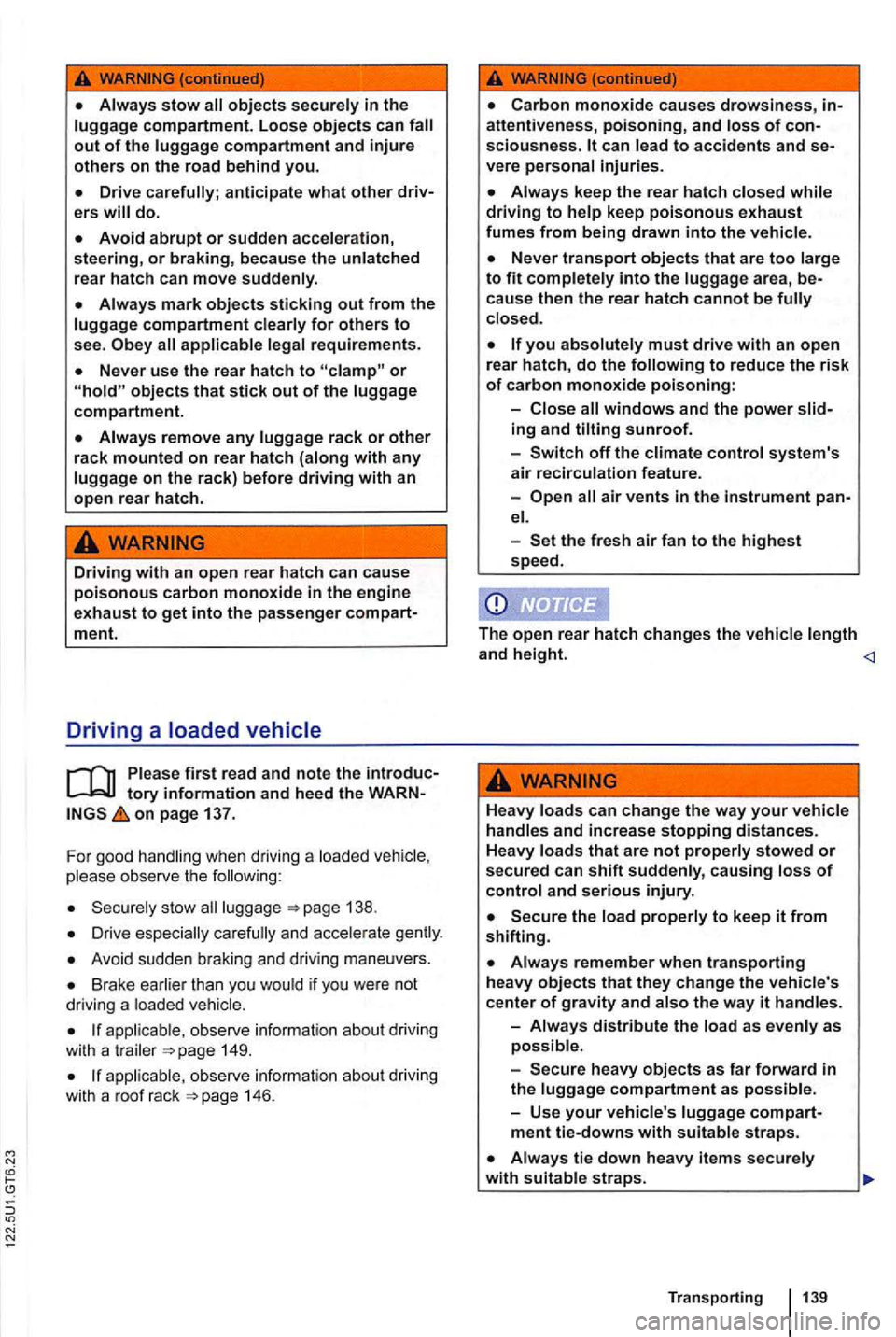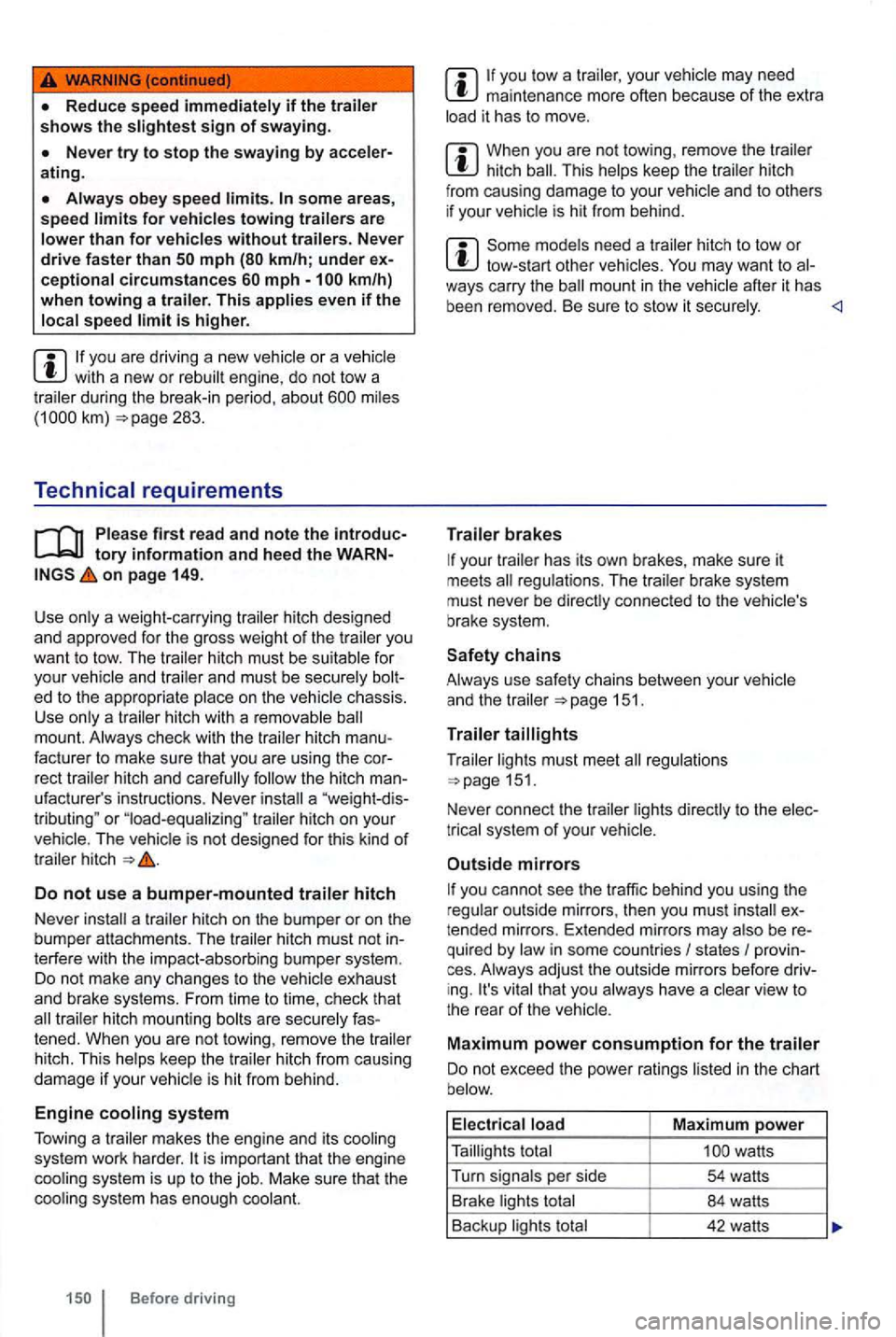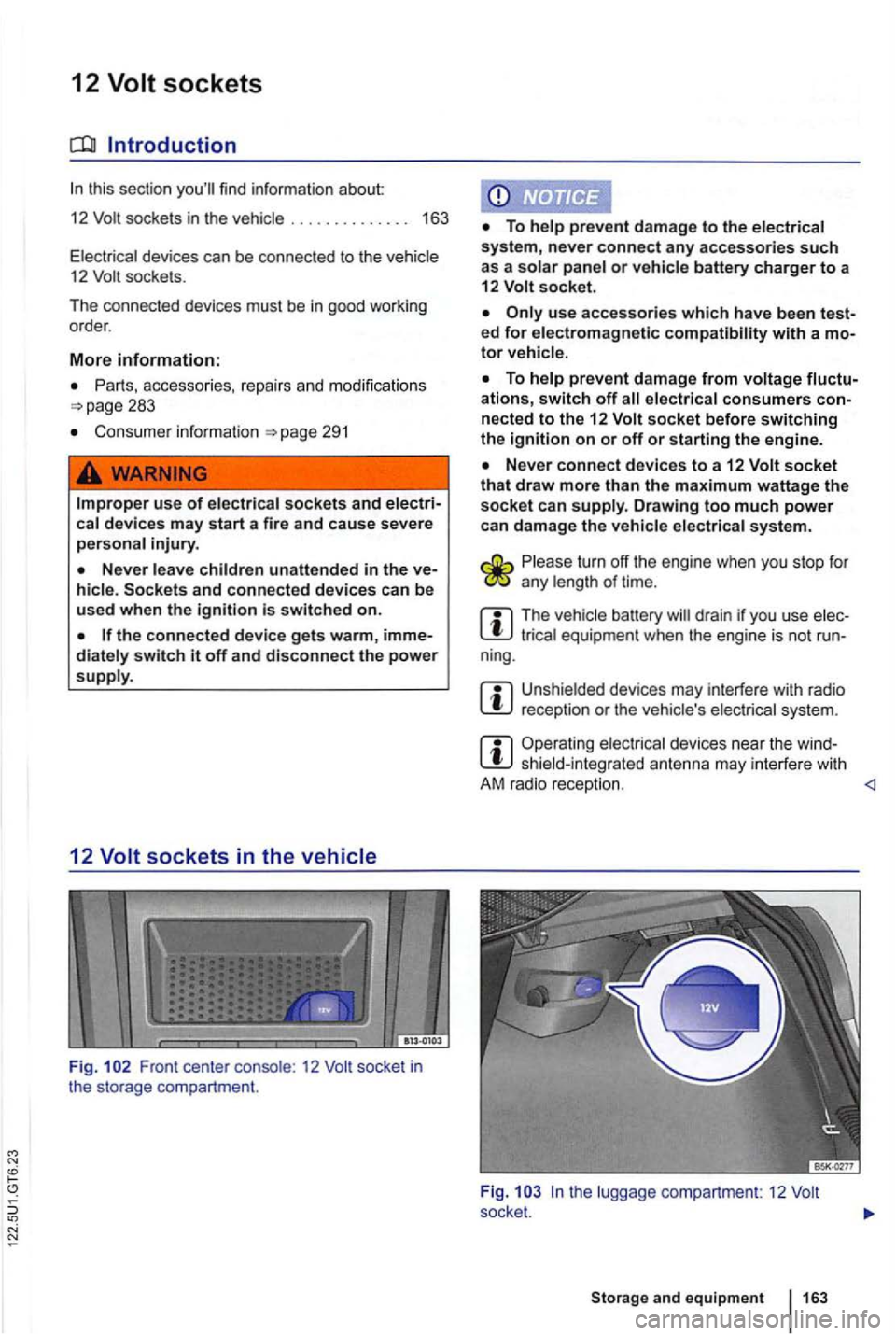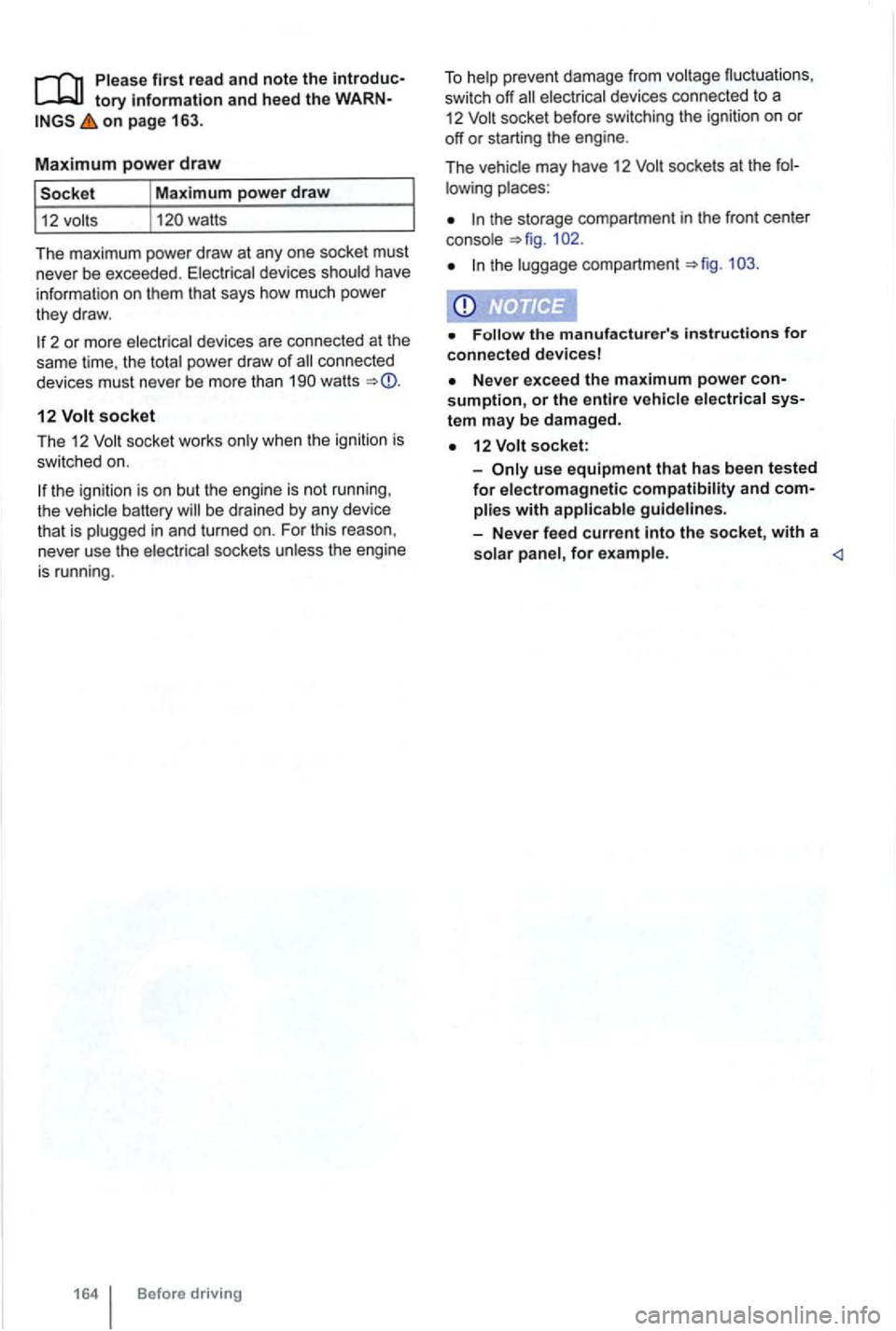Page 232 of 516
additives into the washer reservoir. This which
washer antifreeze agent.
recommended by
and engine damage can oc-
Lights and vision
Page 238 of 516

stow in the compartment. Loose objects can compartment and injure others on the road behind you.
ers
compartment for others to see. requirements.
Never use the rear hatch to or objects that stick out of the compartment.
rack or othe r
rack mounted on rear hatch
Driving with an open rear hatch can cause poisonous carbon monoxide in the engine exhaust to get into the passenger ment.
Driving a
first read and note the tory information and heed the on page 137.
For good
observe the
stow 138 .
Driv e gently.
Avoid sudden braking and driving maneuvers.
Brake if you were not
driving a
observe information abo ut driving with a 149.
1 46 .
attentiveness, poisoning, and of sciousness. can vere
driving to keep poisonous exhaust fumes from being drawn into the
to fit into the area,
you must drive with an open rear hatch, do the to reduce the risk of carbon monoxide poisoning:
-
the fresh air fan to the highest
speed.
The
open rear hatch changes the and height.
Heavy can change the way your and increase stopping distances. Heavy stowed or secured can shift suddenly, causing of and se riou s injury.
to keep it from shifting.
remember when transporting heavy objects that they change the vehicle's center of gravity and the way it
-as
heavy objects as far forward in the
tie down heavy items
Tran sporting 139
Page 249 of 516

some area s, speed
is higher.
you are driv ing a new vehicle or a ve hicle with a new or rebui lt engine, do not tow a during the break-in period, about 283.
Technical requirements
tory informatio n an d heed the WARNon page 149.
Use only a weight-car rying
hitch must be suitable for
you r
a "weight -dis
tributing " or "load-equalizing " trailer hitch on your The vehicle is not designed for this kind of trailer hitch
Do not use a bumper-mounted traile r hitch
Never
a trailer hitch on the bumper or on the
bumper attachments. The trailer hitch must not in
terfe re with the impact-absorbing bumper system.
Do not make any changes to the vehicle exhaust
and brake systems. From time to time, check that trailer hitch mounting bolts are secure ly fas
tened. When you are not towing, remove the trailer
hitch. This
helps keep the trailer hitch from causing damage if your vehicle is hit from behind.
Engine cooling syste m
Tow i
ng a trailer makes the engine and its cooling
system work harder.
Before driving
maintenance more often because of the extra
load it has to move.
When you are not towing , remove the trailer hitch
Some models need a trailer hitch to tow or tow-start other vehicles. after it has
been removed. Be sure to stow it securely.
Trailer brakes
your trailer has its own brakes , make sure it
meets
151 .
T ra
iler
Trailer lights must meet regulations 151.
Never connect the trailer lights directly to the elec
t rical system
of your
Outside mirrors
you cannot see the traffic behind you using the
r egular outside mirrors, then you must ex
t ended mirrors. Extended mirrors may also be re
quired by law in some countries
I states I provin
ces . Always adjust the outside mirrors befo re dr iving. It's vital that you always have a clear view to
the rear of the veh icle .
Maximum po w er con sumption fo r the trailer
Do not exceed the power ratings listed in the chart
b elow.
E l
ectr ica l load Maximum power
Taillights total
Page 252 of 516

Volkswagen Service Vehicles with Xenon
gas-discharge self-adjust to vehicle load
and do not need manual adjustment.
Special towing considerations
th e t railer has an overrun brake, apply the
br akes
Due to the combined towing weight including
the higher gross vehicle weight, the stopping
tance is longer.
Be fo re drivi ng especially on
The vehicle's center of grav ity and , in turn, the
Weight distribution is especially bad if the is emp ty and the trailer is loaded.
Depending on how steep the is an d the
backwards when you first start moving.
When starting off with a tra iler on a
Depress and hold the brake pedal and depress
and hold the clutch (manu al transmission).
171, Shifting .
Unlock the parking brake a nd gently release it
whi le holding the unlock button. At the same time,
release the brake pedal and
depress the
accelerator and, for manual transmissions , let out
the clutch
you can feel the car moving ward . applicable, follow the instruct ions for the Hold feat ure
Do not release the parking brake lever until the
engine starts to move the vehicle forward. your
vehicle has an automatic tr ansmission , you can
so depress and hold the brake peda l for added
b raking and then Jet up on the brake pedal when
you feel that the to move forward .
Drive ahead slowly.
hicle contro l and serious per sonal injury.
dles and increases the distance it needs to stop safely .
Always adapt your sp ee d and driving to th e heavier loa d and the weight distribution in the vehicle. Tak e road , weather , traffic, and visibility conditions into account as well .
Always avoid sudde n maneuv ers and ha rd braking.
atin g.
som e areas
s p ee d for vehicles towing trailers are
lower than for vehicles without trailers.
T ra n spo rting
Page 255 of 516
Maximum
first read and note the introductory information and heed the on
with brake
engines (748 kg.) (748 kg. )
Tongue weight
(91 kg)
The Gross
These ratings are
is the weight of the mount and th e tongue weight of the are added to the
weight ratings given above are of
for every ft m) . o r porti on of additiona l
altitude .
156 Before driving
Exceeding the gross
ous
Exceeding the gross weight ratings can cause
extensive
Page 262 of 516

N
12 Volt sockets
Introduction
sockets in the . . . . . . . . . . . . . . 163
devices can be connecte d to the 12 socke ts .
Th e co nn ected devices
must be in good worki ng
order .
More information:
Parts . accessories. repairs a nd modifications 283
Consume r informa tion
use of
unattended in the and connected devices can be
used when the ignition is switched on.
switch it off and disconnect the power
12
Fig . Front center 12
or battery charger to a
12 socket.
ed for electromagnetic with a
ations, switch off nected to the 12 socket before switching the ignition on or off or starting the engine.
socket that draw more than the maximum wattage the socket can Drawing too much power
can damage the
turn off the engine when you stop for any of time.
m The battery drain if you use equipmen t when the engine is not run-
ning.
m reception or the system.
m Operating shiel d-integrat ed ant enna may interfere with
A M r adio recept ion.
Fig . the luggag e compartment: 12 socket.
and equipment
Page 263 of 516

Please first read and note the tory information and h eed the on page 163 .
Maximum power draw
Maximum power draw
watts
T he maximum power draw at any one socket must
ne v
er be exceeded . Electrical devices should have
info rmation on them that says how much power
they draw .
2 or more devices are connected at the
same lime. the total power draw of
12
soc ke t works when the ignition is
sw itched on.
the ignition is on but the engine is not running ,
the vehic le battery be drained by any dev ice
tha t is plugged in and turn ed on. For th is reason,
never use the electrica l sockets unless the engine
is runn ing.
Before driving T
o
preve nt damage from voltage fluctuations ,
switch off electrical devices connected to a 12
lowing places:
the storage compartment in the front center
console
t h e luggage compartment
Follow the manufacturer's instructions for conne cted devices !
Never exceed the maximum power sumption, or the entire vehicle electrical tem may be damaged .
12
and
for example.
Page 264 of 516
Explanatory notes in this section regarding tomatic transmissions Direct
an unauthorized vehicle key is used or the sys
tem mal functions , Immobilizer active! may
appear on the instrument
stead wh ile following proper and safe procedures.
More information:
Vehicle key set
Shifting gears
Braking , stopp ing and parking =>page 179
Steering 192
Startin g assistance systems
Refueling =>page 214
Emergen cy clo sing and opening
Jump-starting
Towing
off the engine while the vehicle is moving can make the vehicle harder to stop and result in loss of vehicle control, leading to collisions and severe perso nal injurie s.
To reduce the risk of serious personal injury when starting and running the vehicle's gine:
shifting, parking 165